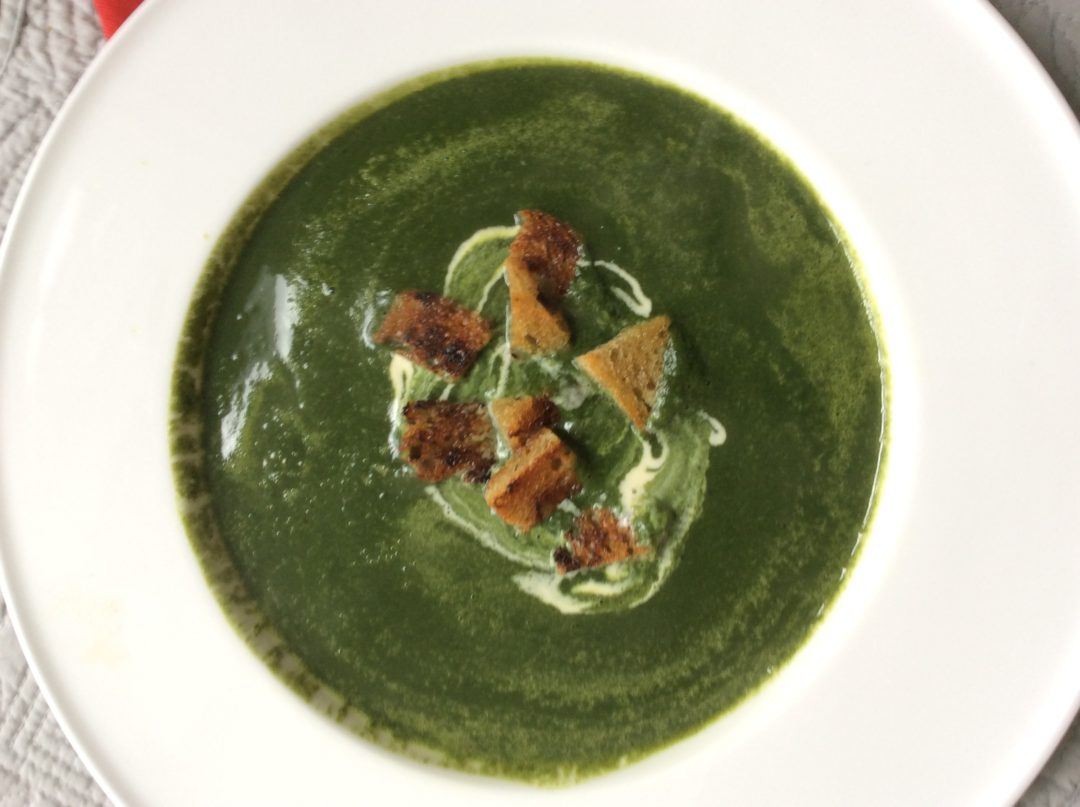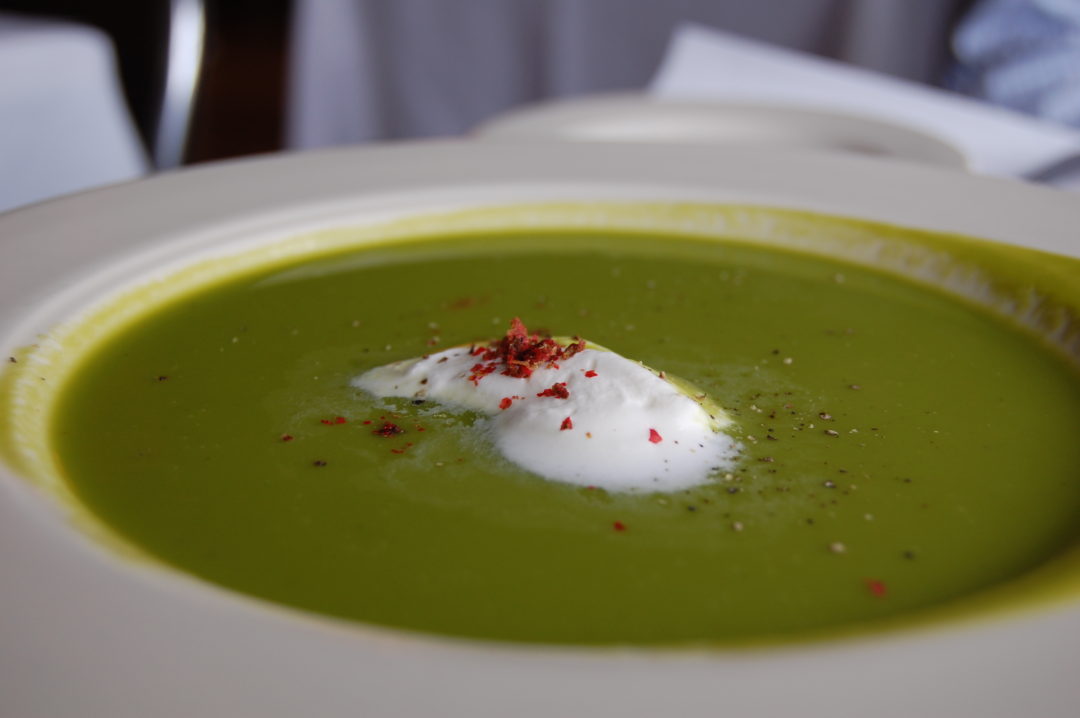I’d been thinking for a while that I might have got into a bit of rut with my cooking, so while preparing my farmdrop.com order, I decided to disrupt my vegetables choices and opt instead for a veg bag from lovely Purton House organics. My thinking was that if I’m faced with a bag full of fab veg, I will be forced (or do I mean encouraged?) into new thinking and approaches.
Anyway, this week the bag contained Jerusalem artichokes, which I have always loved when I’ve eaten in Italy or France, but never cooked in the UK. The first idea that came into my mind was soup; I love the whole process of soup making, there is something very reassuring and comforting about both making and eating it. I know, that doesn’t push me very far outside my cooking comfort zone but we are having a cold snap here in London, so soup is just the ticket.
You probably know that Jerusalem artichokes have absolutely nothing to do with Jerusalem, the word being a corruption of the Italian for sunflower: girasole. The two plants are related, both being of the genus helianthus. The artichokes can romp away up to 3m high if left unchecked and do look pretty if a bit straggly, when growing. The tubers do look somewhat unpromising and learn from my experience: try to get the least knobbly ones, otherwise after peeling them, you can be left with precious little to use.
It is thought that the plant originally came from North America via the French explorer Samuel de Champlain (he who founded Quebec and charted the first maps of the Canadian east coast). The plant was first cultivate though, by the Dutch botanist Petrus Handius in the seventeenth century. They proliferated across Europe to the point that in 1629, the British botanist John Parkinson declared them to be so common and cheap “that even the most vulgar begin to despise them”.
Delicious though they are, they do have an unfortunate reputation for disrupting the digestive system although I think Gerard’s Herbal of 1621 was a tad extreme in saying “which way so ever they be dressed and eaten, they stir and cause a filthy, loathsome, stinking wind within the body, thereby causing the belly to be pained and tormented, and a meat more fit for swine than men”.
Personally I’ve never found this to be the case but perhaps that is because our diet is already quite rich in beans, pulses and vegetables. I also find that pairing the artichokes with a full fat dairy product (butter, cream, cheese or yogurt) minimises the disruptive effect.
If I haven’t completely put you off trying these, bear in mind they are a rich source of potassium and iron and also contain useful quantities of niacin, thiamine, phosphorous and copper so give this delicious soup a go and be generous with finishing it with cream or creme frâiche!
JERUSALEM ARTICHOKE SOUP
Print RecipeIngredients
- 25g unsalted butter
- 1 tbsp olive oil (doesn’t need to be virgin but should have a mild flavour)
- 1 large onion, peeled and chopped
- 3 celery stalks, chopped (make sure you run a potato peeler down the stalks if they are “mature”, to rid them of those pesky strings)
- 2 medium potatoes, peeled and diced
- 250 - 300g unpeeled weight Jerusalem artichokes, peeled and diced
- a few sprigs of thyme
- 1 litre hot vegetable stock ( a low salt powder or cube is fine)
- 250 ml cold whole organic milk (don’t even think of doing this with skimmed milk)
- sea salt and freshly ground black pepper
Instructions
Take a heavy bottomed pan and melt the butter over a low to medium heat then add the oil to minimise the risk of the butter burning
When the butter is foaming but not coloured, add the onion and celery and soften them for five minutes or so
Do not allow this soup to colour at any stage as it will spoil the creamy white purity of the end product
Add the potato and Jerusalem artichoke and cook for another five minutes
Strip the leaves off the thyme sprigs and add to the mixture in the pan
Add the hot stock, followed by the milk
Stir well and leave to simmer gently for 30 - 40 minutes; keep a sharp eye on proceedings as you don’t want any colour, or for the milk to cause a boil over
When the artichoke and potato are easily crushed against the side of the pan, switch off the heat and allow the soup to cool slightly
Use a stick blender to create a smooth creamy soup, season and serve in warm bowls
Notes
Finish with cream or creme frâiche and chopped parsley to create a colour contrast In the picture I have finished with three rehydrated dried Morels, fresh double cream and a drizzle of truffle oil. Pink peppercorns make a pretty contrast, perhaps with a spoonful of Greek yoghurt.







